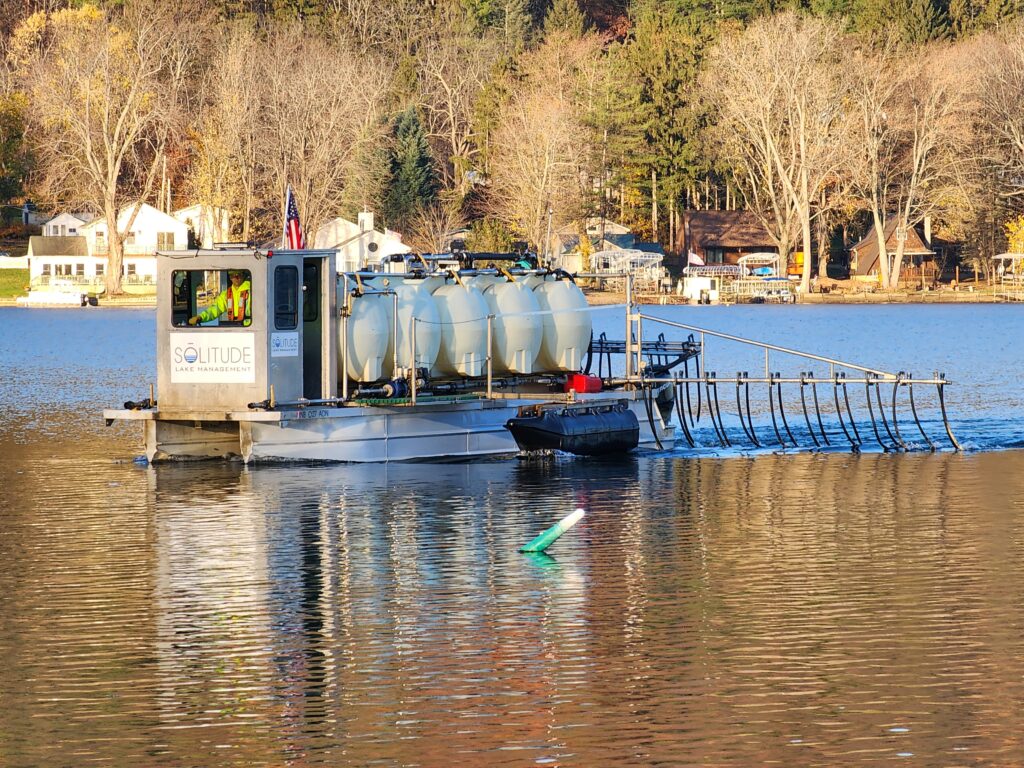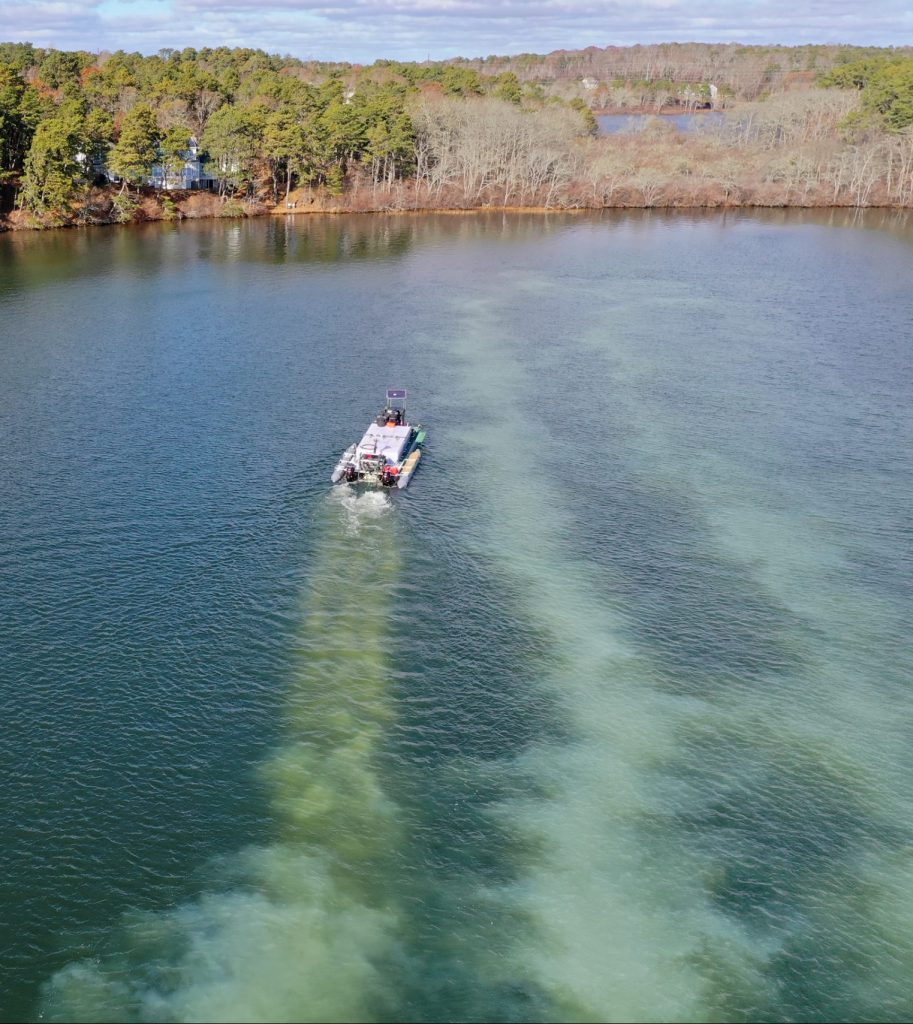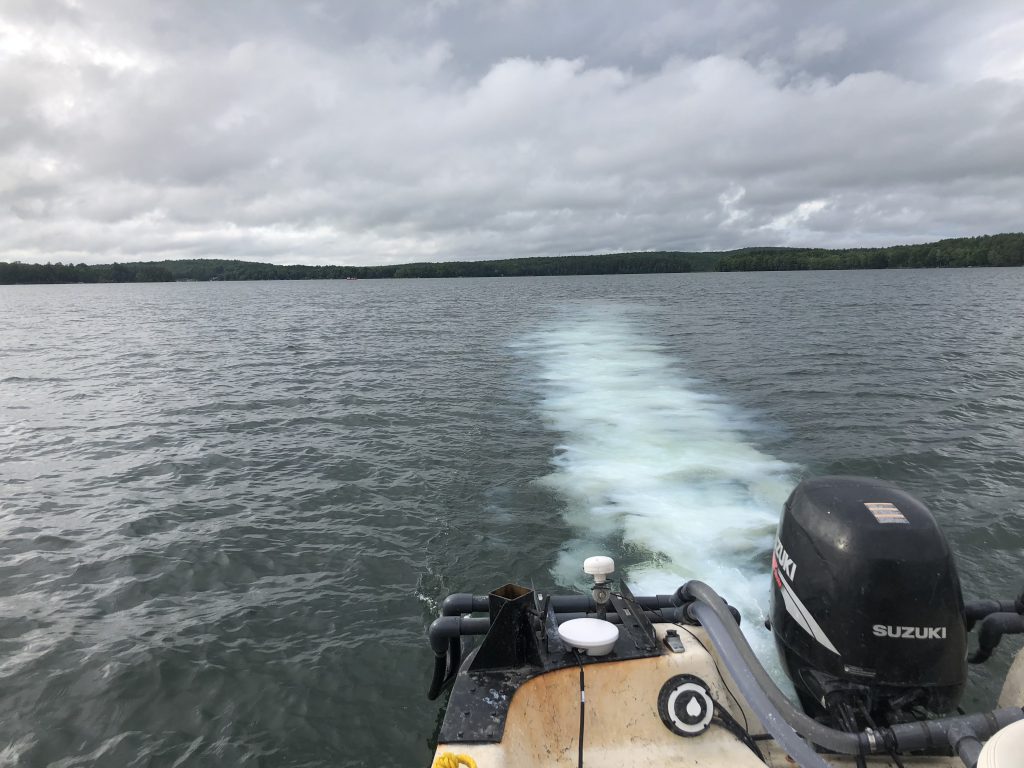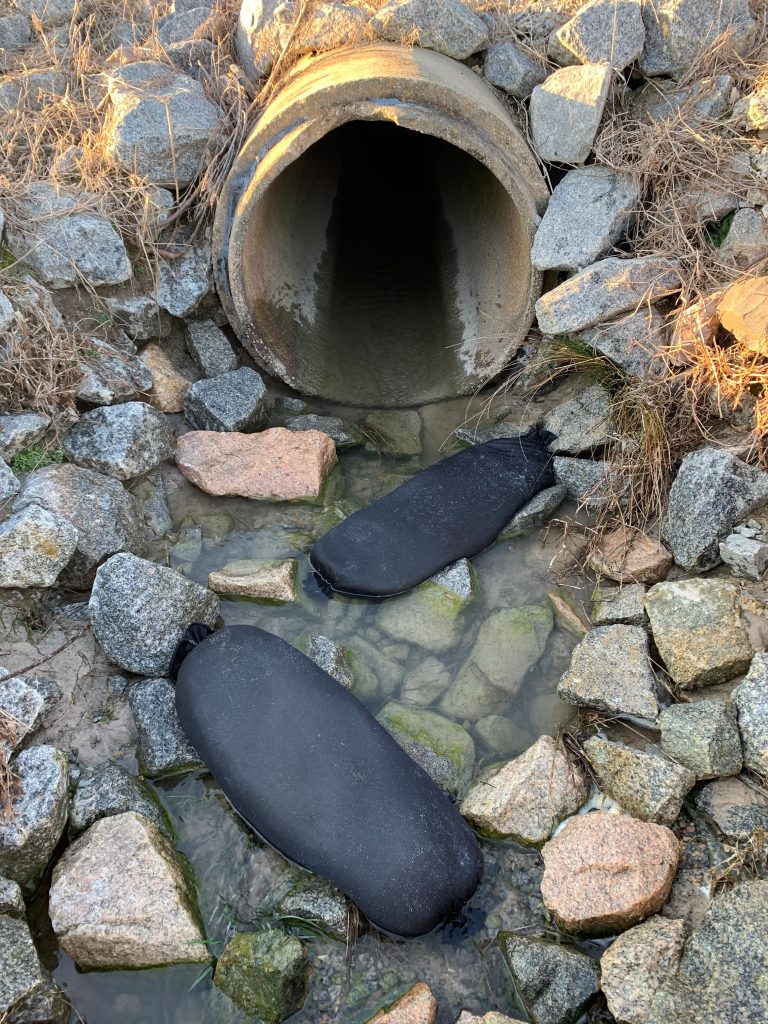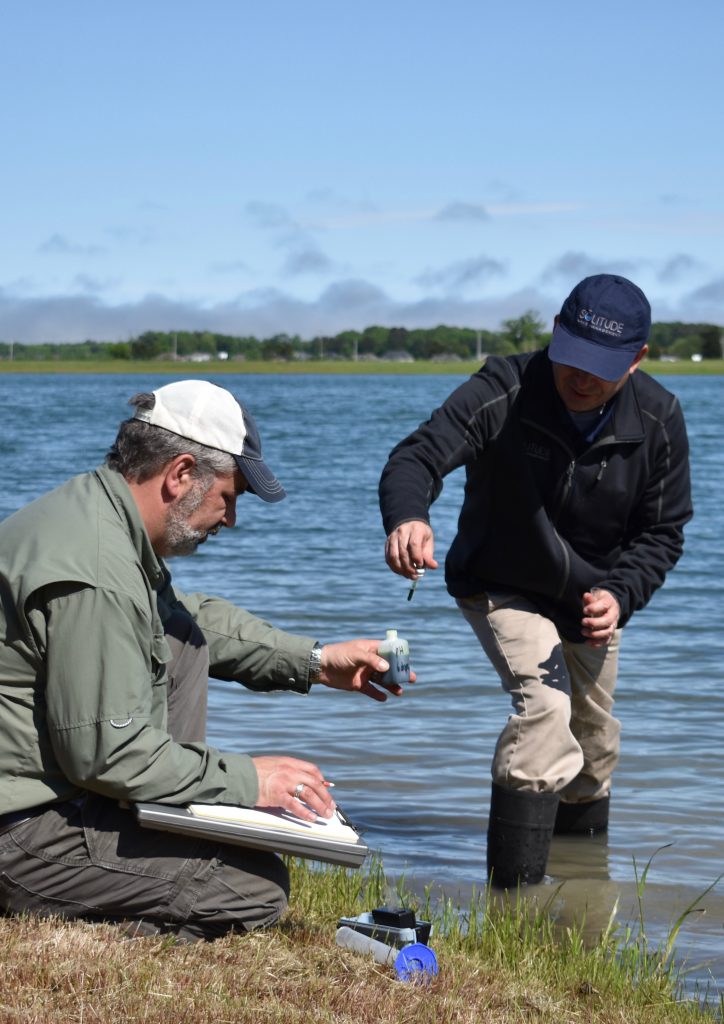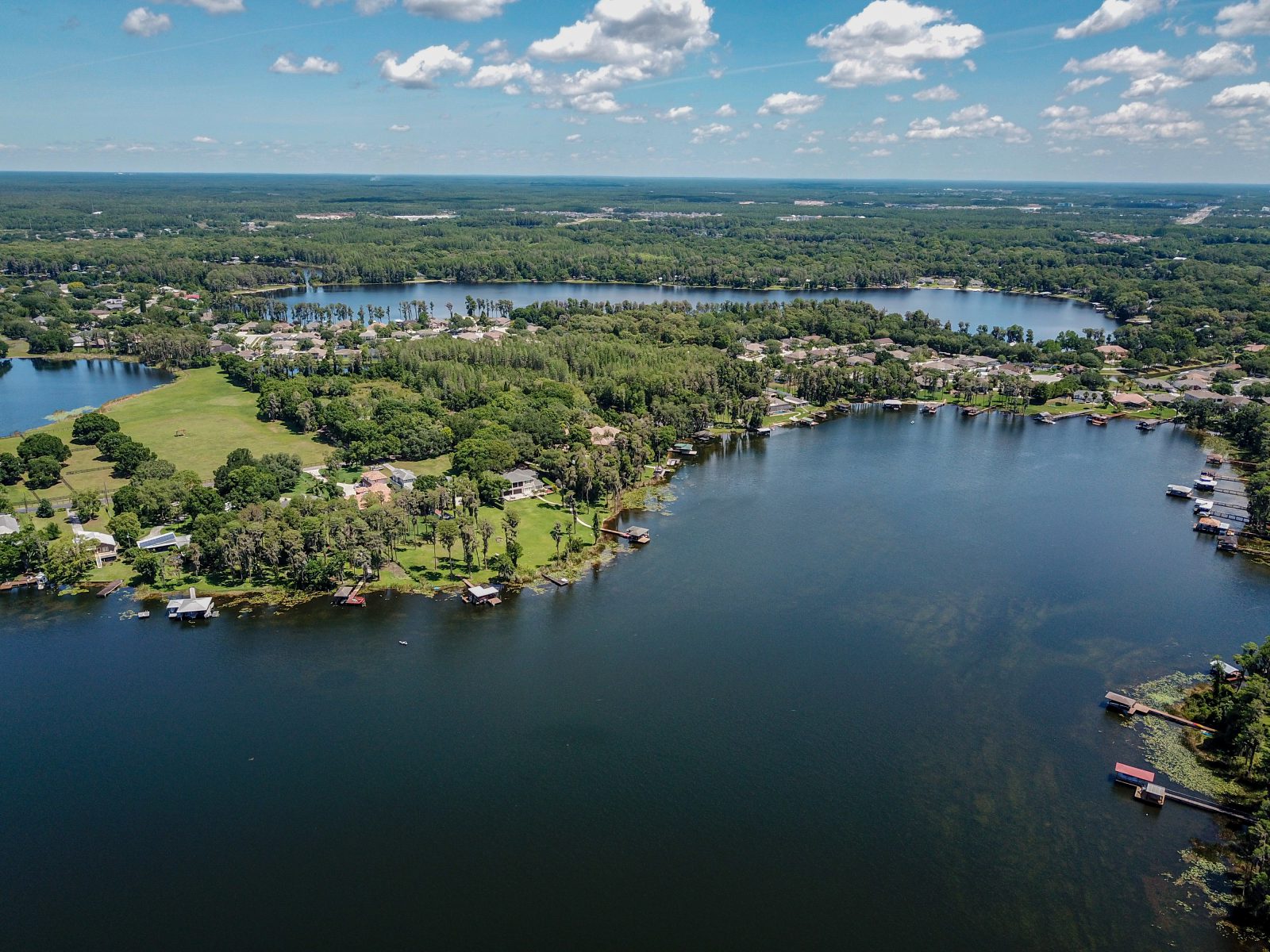
How Alum Works in Large Lakes in 3 Phases
One of the most impactful tools in freshwater management is nutrient remediation. While nutrients are essential to all life, aquatic ecosystems with high nutrient levels are more likely to develop nuisance weeds, algae, toxic cyanobacteria (blue-green algae), bottom muck, cloudiness, bad odors, and other symptoms that can ruin a day on the water. For more than 60 years, aquatic experts have relied on a nutrient remediation product called aluminum sulfate (alum) to rapidly and cost-effectively reset nutrient levels in large, turbid waterbodies such as recreational lakes and drinking water reservoirs.
Watch An Alum Application In Action
Alum is a naturally occurring, well-studied element that is abundant in the earth’s crust. It is composed of positively charged aluminum ions and negatively charged sulfate ions, making it an excellent binding agent used in a variety of industries, including textile making, paper and plastic manufacturing, personal care, agriculture, and wastewater treatment.
In the lake management industry, alum has become an essential tool to maintain safe, clean drinking water that is free of taste and odor compounds. Alum is also applied to maintain the aesthetic beauty of recreational lakes where people enjoy fishing, boating, nature watching, and making unforgettable memories around the water.
Alum projects are implemented in three key phases to limit nutrients:
PHASE 1 – Application
Alum is typically applied to the water by a specialized floating barge. SOLitude’s custom-built, state-of-the-art application vessel spans 30 feet in length and boasts three tanks with a total capacity of 3,000 gallons. It comes equipped with advanced technology, including a fathometer and GPS-based speedometer, in-line pressure gauges, flowmeters, and bathymetric measurements to ensure that the target dose rate of aluminum is achieved in the right areas
PHASE 2 – Binding
Once applied, the alum forms a cloudy-looking floc that binds with free radical phosphorus suspended in the water column. SOLitude’s barge is fitted with a calibrated pumping system that features a submersed nozzle, which releases alum into the water. By dispensing alum several feet below the surface of the water, the settling process is less likely to be disrupted by wind or surface currents.
PHASE 3 – Nutrient-locking
The floc then gradually settles to the bottom of the waterbody and creates a snow-like cover over the nutrient-rich lake floor where it locks in phosphorus and dissolves. Almost immediately after an application is complete, the water column will appear more clear, and water quality will continue to improve over the course of days and weeks. The positive effects can last for years to decades if the lake is properly maintained.
Is alum safe?
Alum is a well-studied and essential tool that is endorsed by the North American Lake Management Society (NALMS). SOLitude’s licensed professionals are highly experienced in the safe, efficient use of alum, having applied more than 14 million gallons of alum across 200+ projects. What most people don’t realize is that Alum is also a common food additive and can be found at your local grocery store, making it one of the most eco-friendly water quality restoration tools.
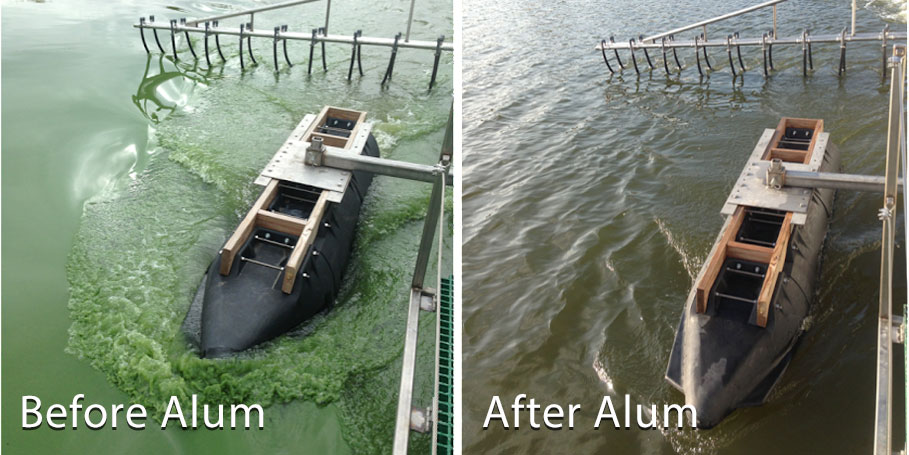
What about small ponds or waterways?
Alum is most often recommended for lakes larger than 10 acres to ensure optimal dilution and mixing, but smaller lake and pond owners can also conduct nutrient remediation applications with safe products like Phoslock or EutroSORB. Phoslock is a natural lanthanum-modified clay that is designed to bind with and “deactivate” phosphorus within the bottom muck and sediments to improve water quality conditions.
EutroSORB: Nutrient Management for Small Ponds
EutroSORB is a newer nutrient remediation technology that physically captures and removes nutrients from the water. It is most effective when used in waterbodies with movement, such as canals, streams, and stormwater systems. It is also available in an aqueous form, EutroSORB WC, that licensed professionals can apply via surface spray, subsurface injections, or pouring into areas with considerable mixing, such as pipes and intakes.
In smaller lakes and ponds, nutrient remediation is most effective when conducted as part of a comprehensive program that encompasses a variety of cost-effective solutions. Fountains and aerators, for example, help improve dissolved oxygen (DO) in the water column, which helps to more efficiently break down nutrient-rich bottom muck. Beneficial biological bacteria can also aid in this natural process of “digestion.” Repairing and strengthening eroded shorelines will help prevent the accumulation of sediment and plant matter in the first place, prolonging the need for more large-scale services like hydro-raking or dredging.
Alum: One Tool In Your Lake Management Toolbox
Nutrient remediation is a highly safe tool to restore balance and lasting beauty to our large lakes and drinking water resources. But to maintain healthy conditions many years into the future, Aquatic Experts emphasize the importance of consistent care and attention, starting with water quality testing. When conducted on an ongoing basis, Aquatic Experts can establish a baseline of health and compare it to trends that develop over time. This helps ensure that negative changes in water chemistry are caught early on and redirected before serious problems begin to manifest.
Ultimately, an Annual Management Program is the best way to set your waterbody up for lasting success. Annual programs are tailored to support your lake’s unique needs and ensure your short- and long-term water quality goals are met. Contact your local Aquatic Experts to begin cultivating a healthy, functional waterbody.
SOLitude Lake Management is a nationwide environmental firm committed to providing sustainable solutions that improve water quality, enhance beauty and preserve natural resources.
SOLitude’s team of aquatic scientists specializes in the development and execution of customized lake, stormwater pond, wetland and fisheries management programs. Services include water quality testing and restoration, algae and aquatic weed control, installation and maintenance of fountains and aeration systems, shoreline erosion control, muck and sediment removal and invasive species management. SOLitude partners with homeowners associations, golf courses, private landowners, businesses and municipalities. SOLitude Lake Management is part of Rentokil, a leading business services company, operating across the United States, Canada and Puerto Rico.
For more information, visit SOLitude Lake Management at solitudelakemanagement.com, and connect on Facebook, LinkedIn and Twitter.








